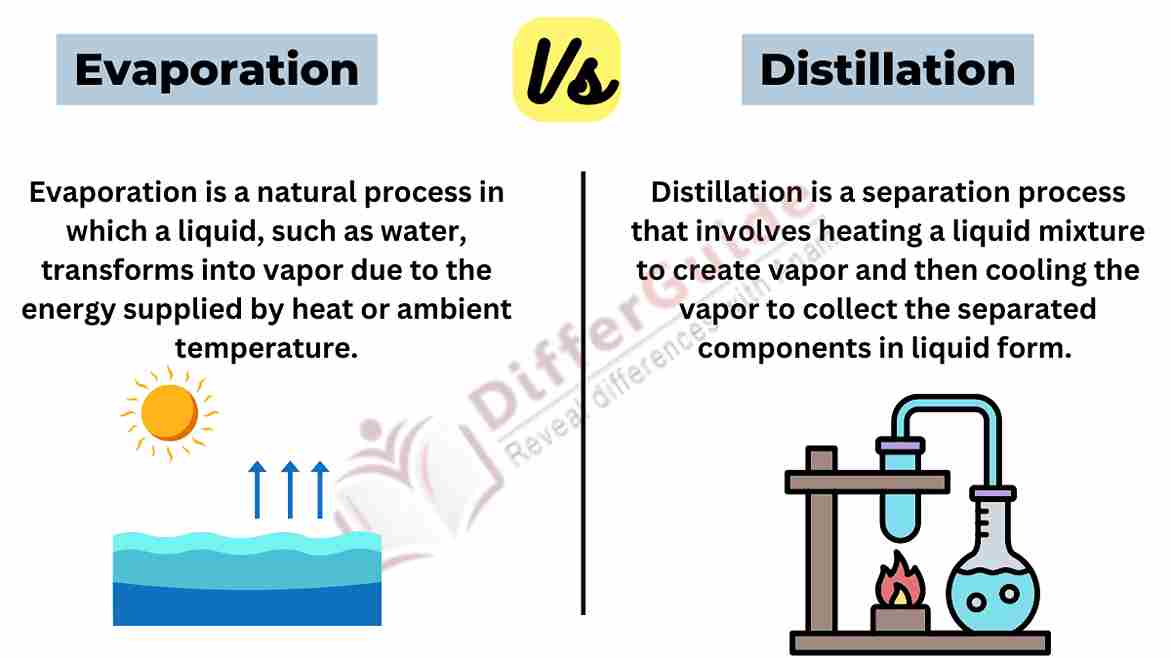The key difference between evaporation and distillation is that evaporation is the natural process of liquid turning into vapor due to heat, while distillation is a controlled process of vaporizing and condensing liquids to separate components based on their boiling points.

What is Evaporation?
Evaporation is a natural process in which a liquid, such as water, transforms into vapor due to the energy supplied by heat or ambient temperature. It occurs at the liquid’s surface as molecules gain enough energy to break free from the liquid phase and enter the vapor phase.
Unlike boiling, which occurs throughout the liquid, evaporation takes place only at the surface. This process is essential for the water cycle, where water from bodies of water or moist surfaces evaporates into the atmosphere, eventually leading to cloud formation and precipitation. Evaporation is also commonly used for drying purposes and concentrating solutions.
What is Distillation?
Distillation is a separation process that involves heating a liquid mixture to create vapor and then cooling the vapor to collect the separated components in liquid form. This method capitalizes on differences in boiling points among the components.
As the mixture is heated, the component with the lower boiling point vaporizes first, leaving behind the higher boiling point components. The vapor is then condensed back into liquid form and collected. Distillation is widely used for purification, obtaining specific substances from mixtures, and producing high-purity products, such as distilled water, alcoholic beverages, and essential oils.
Evaporation vs Distillation
The main difference between evaporation and distillation is
given below:
| Evaporation | Distillation | |
| Process | No specialized equipment is required, just the container and heat source. | Separation process that involves vaporizing a liquid mixture and then condensing the vapors back into liquid form. |
| Purpose | Generally used to obtain solid solutes from a solution. | Used to separate components of a liquid mixture based on their boiling points. |
| Method | Takes place at the liquid’s surface. | Requires heating the mixture and collecting and condensing the vapors. |
| Temperature | Typically occurs at temperatures below the boiling point of the solvent. | Involves heating to temperatures at or above the boiling points of the components. |
| Application | Used for drying, concentrating solutions, and obtaining solutes. | Used for purification, separating components from crude mixtures, and producing high-purity products. |
| Result | Leaves behind solute crystals or a concentrated solution. | Yields separate fractions of different components based on their volatility. |
| Equipment | Salt crystals form from saltwater, clothes drying, puddles disappearing. | Requires distillation apparatus with a heating source, condenser, and receiving flask. |
| Energy Consumption | Generally requires less energy. | Typically requires more energy due to heating and vaporization. |
| Examples | Salt crystals form from saltwater, clothes drying, and puddles disappearing. | Purification of alcohol, separation of components in crude oil refining. |
